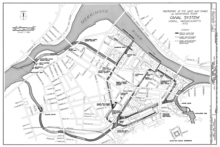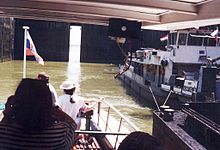


A power canal is a canal used for hydraulic power generation, rather than for transport of watercraft. The power canal was a major factor in the Industrial Revolution in New England in the 19th century. Most early power canals were mill races used mechanically to transfer power directly from falling water to machinery in mill buildings. Later, the hydraulic power generated electricity locally for the same mill factories. These power canals were often filled in as electricity (transported by power lines) replaced the need for local water power, and road transport needs or city expansion needs reclaimed the land. Some hydraulic power canals were transformed into local electric generators, but most were closed. Remains of power canals can be seen in old mill towns and are often protected as historical structures today.